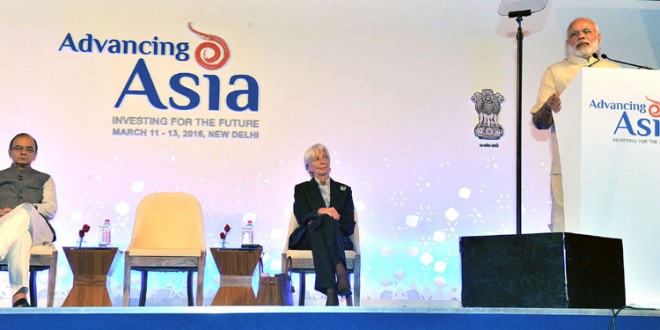-
- The long pending quota revisions agreed in 2010 have finally come into effect. The quotas of emerging countries will now better reflect their weight in the world economy. This will give them more say in collective decisions in the IMF.
- Reform of global institutions has to be an on-going process. It must reflect changes in the global economy, and the rising share of emerging economies. Even now, IMF quotas do not reflect the global economic realities. Change in quotas is not an issue of increasing the ‘power’ of certain countries. It is an issue of fairness and legitimacy. The belief that quotas can be changed, is essential for the fairness of the system. For poor nations to respect the legitimacy of such institutions, they must be able to aspire and to hope. I am, therefore, very happy that the IMF has decided to finalize the next round of quota changes by October 2017.
- India has always had great faith in multi-lateralism. We believe that as the world becomes more complex, the role of multilateral institutions will increase.
- Many knowledgeable people have said that the twenty first century is, and will be, the Asian Century. Three out of every five people in the world live in Asia. Its share in global output and trade is now close to one-third. Its share in global foreign direct investment is about forty percent. It has also been one of the world’s most dynamic regions. Although Asia has slowed down, it is still growing at a rate three times greater than that of the advanced countries. It is, therefore, the ray of hope for global economic recovery.
- When we think about Asia, we must recognize that it is distinct in many ways. Social stability built on strong family values is another feature of Asia’s development.
- India has a special place in Asia. It has historically contributed to Asia in several ways. Buddhism spread to China, Japan, and other parts of South East Asia from India. It has had a lasting influence on the continent’s culture. Kingdoms in the South and West of India have engaged in maritime trade with other parts of Asia for over a thousand years. The Indian national movement showed other Asian countries that freedom from colonial rule could be achieved without violence. It also demonstrated clearly that the sense of nationhood, could be broad and inclusive. It need not be defined by narrow linguistic or religious identities. The Sanskrit saying “Vasudhaiva Kutumbakam” – the world is one family – refers to this sense of the oneness of all identities.
- India has dispelled the myth that democracy and rapid economic growth cannot go together. India’s growth rate of over seven per cent is being achieved in a country that is also a vibrant democracy. It is sometimes assumed that democracy is a colonial gift to India. But historians tell us that India had produced forms of democratic self governance, many centuries ago, when democracy was unknown in many parts of the world.
- India has also shown that a large, diverse country can be managed in a way that can promote economic growth and maintain social stability. One way in which we are doing this is through cooperative and competitive federalism.
- Our rapid economic growth is also very distinct in Asia. We have never tried to gain in trade at the expense of our partners. We do not follow “beggar thy neighbour” macro-economic policies. We have never undervalued our exchange rate. We add to world and Asian demand by running current account deficits. We are therefore good Asian and good global economic citizens, and a source of demand to our trading partners.
- We do not intend to rest on achievements because my agenda of “reform-to-transform” still needs to be finished. Our recent budget provides a roadmap for our future plans and ambitions. Our underlying philosophy is clear: To create the climate for wealth generation and for that wealth to be spread to all Indians, especially the poor, vulnerable, farmers, and disadvantaged communities.
- India is a responsible global citizen in protecting the planet. India played a positive role at the COP 21 Summit. Between now and 2030, we intend to re-write history by growing rapidly and also reducing the emission intensity of our GDP by thirty-three per cent. By then, forty per cent of our installed electric power capacity will be from non-fossil fuel. We will build an additional carbon sink of over 2.5 billion tonnes of carbon dioxide equivalent by 2030, by creating additional forest and tree cover. These initiatives are from a country with very low per capita land availability and a low base of per capita emission. We have taken the lead in launching an international solar alliance, involving 121 solar-resource rich countries falling between the Tropic of Cancer and the Tropic of Capricorn. This will help many developing countries, including those in Asia, to take advantage of developments in renewable energy. India has moved from a regime of significant carbon subsidy to one of carbon taxes. India is one of the few countries to have a carbon tax in the form of a cess on coal. The Coal cess has been doubled in the Budget of 2016-17.
- My dream is of a Transformed India. I lay this dream alongside our common dream of an Advanced Asia – an Asia where more than half of the global population can live with happiness and fulfillment. Our joint heritage and mutual respect, our common goals and similar policies, can and must create sustainable growth and shared prosperity.
(The views expressed are the author's own and do not necessarily reflect the position of the organisation)

